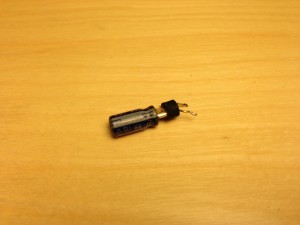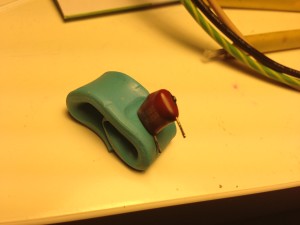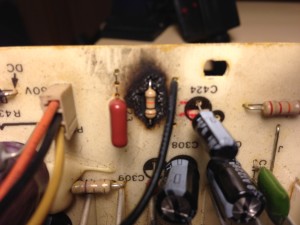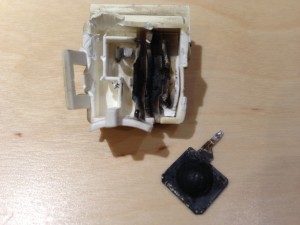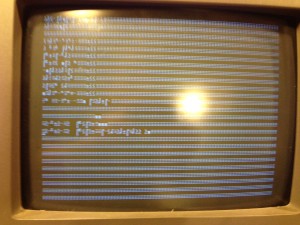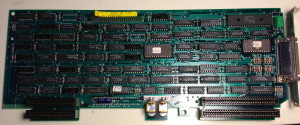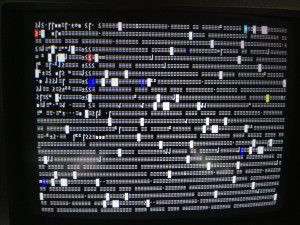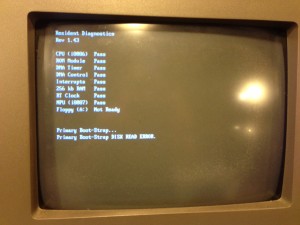It’s hard to tell what went first… Was it the flyback? Maybe it’s the mylar with the guts oozing out the side. The weak green gun on the crappy Zenith A68AGD01X tube? Perhaps it was a perfect storm but my sneaky suspicion is still that something went first before the rest. The frusteration came however when I replaced the flyback, all the burnt components and all of the caps and still got no signs of life.
That signaled the time to bring in the rejuv. I haven’t used a rejuv in years so this was pretty exciting. One of my friends just picked up a Sencore CR70 off of eBay. It’s a really sweet box. Way nicer than the one I used at All Repair back in the day. This one only has 5 sockets. You set the wiring diagram but using a series of switches on the unit itself.
Anyhow, we fire up the rejuv and found the green have pretty lousy emissions. Worst yet, the cutoff didn’t even register on the scale until we cranked the negative bias from the recommended 68v down to somewhere in the 35v range. We hit it with the auto rejuv 3 times and then with the manual cycle. This brought the emissions back to the level of the other guns but not the cutoff. There was a little bit of improvement but it’s a clear sign that this tube will need to be replaced sooner than later.
After rejuving however it still didn’t work. We had heater and high voltage though so we were a bit perplexed. We ended up checking the G2 voltage live in circuit. The most we could squeeze out of it was 190v or so. This was way too low given that a similar chassis with the identical tube a few games downw was putting out 290v to get a reasonable picture. We had the Neotec NT-27E service manual so we gave the schematic a once over. It APPEARED that our fault may have been in the brand new flyback but my friend didn’t want to give up so easily. he decided to check every pin of the CRT to ground.
Low and behold, G3(focus) was reading less than 1M of resistance to ground. Not particularly good. A closer look at the socket revealed that it had gotten really hot. We picked at it until it opened up and ended up with a handful of carbon residue. It turns out there is a spark gap inside of this socket. It had started arcing which produced some carbon. This led to more arcing until the focus had shorted enough to ground where it was also dragging down the G2 voltage substantially.
For the moment, we yanked the spark gap and soldered the focus wire directly to the focus pin. Needless to say it fired right up.
Not sure how long this would have taken me to discover myself but it was a darned good find on my friend’s part. Very impressive.

